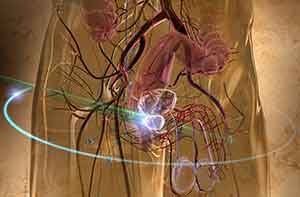Antibiotic use for travellers’ diarrhoea favours particularly resistant super bacteria
A traveller who resorts to using antibiotics will pick up the most resistant strains of common “super bacteria”, proves a recent study.
 Every year, millions of travellers visit countries with poor hygiene, and approximately one third of them return home carrying antibiotic-resistant ESBL intestinal bacteria. Most of them remain unaware of this, as the bacteria cause no symptoms. High-risk areas for contracting ESBL bacteria are South and South-East Asia, Africa and Latin America.
Every year, millions of travellers visit countries with poor hygiene, and approximately one third of them return home carrying antibiotic-resistant ESBL intestinal bacteria. Most of them remain unaware of this, as the bacteria cause no symptoms. High-risk areas for contracting ESBL bacteria are South and South-East Asia, Africa and Latin America.
Diarrhoea is the most common health complaint for people who travel to poor regions of the world. Those contracting diarrhoea have an increased risk of ESBL acquisition, and if they choose to treat it with antibiotics, the risk becomes multiplied. A Finnish study led by Professor Anu Kantele and published two years ago showed that among people travelling to high-risk areas, those contracting diarrhoea and taking antibiotics, up to 80% brought ESBL super bacteria home with them.
A follow-up study led by Professor Kantele has now established that antibiotics taken while abroad not only render the tourist susceptible to an ESBL infection, but also lead to the most resistant strains of these bacteria being selected.
“ESBL bacteria are resistant to penicillins and cephalosporins, which is why infections caused by them are treated with antibiotics from other groups, such as fluoroquinolones (e.g. ciprofloxacin). When we analysed the patients with ESBL more closely, we found that among those who had not resorted to using antibiotics, 37% had an ESBL strain resistant to fluoroquinolone. As for the travellers who had taken fluoroquinolone, 95% had a strain of ESBL resistant to fluoroquinolone and, indeed, a variety of other antibiotics. Antibiotic use thus implies selecting ESBL strains with the broadest spectrum of resistance,” Kantele explains.
“The finding makes sense. When we take an antibiotic, the bacteria that survive in our digestive system are those resistant to the treatment.”
Antibiotic resistance can be transferred between bacteria through a package containing a variety of resistance genes, meaning that one package may contain resistance to several types of antibiotics. Indeed, most fluoroquinolone-resistant ESBL strains were also found resistant to certain other types of antibiotics the resistance to which is known to be transferred in the same gene packages that transfer ciprofloxacin resistance.
“In practice this means that travellers pick up the most resistant strains of ESBL, and we are left with dwindling treatment options for ESBL infections,” states Kantele.
Antibiotic resistance is a serious threat
An ESBL infection rarely manifests through symptoms. Still, even a symptomless carrier can pass on the bacteria and, with ill luck, it can cause a severe, even life-threatening disease.
Kantele emphasises that antibiotic resistance is one of the biggest threats to health care. If antibiotics loose their efficacy, many infectious diseases now treated successfully with antibiotics may become lethal again.
“The spread of resistant strains of bacteria makes the situation worse. Therefore, unnecessary use of antibiotics should be avoided also while travelling. Diarrhoea mostly remains mild or moderate, and no antibiotics are needed in such cases for healthy adults. They should just make sure to keep hydrated. And, if necessary, anti-motility medication can be taken in small amounts to alleviate the symptoms.”
The study recently published in Travel Medicine and Infectious Disease recruited Finnish travellers visiting the Travel Clinic at Aava Medical Centre as research subjects. The subjects gave a stool sample both before travel and immediately upon return, and answered questionnaire forms. A total of 90 people, all of whom had contracted an intestinal strain of ESBL bacteria while abroad, were selected to participate in the follow-up study. The susceptibility of the various strains to several different antibiotics was examined, and the results compared to such particulars as destination, age of traveller, travellers’ diarrhoea, and antibiotic treatments used.
Source: University of Helsinki




